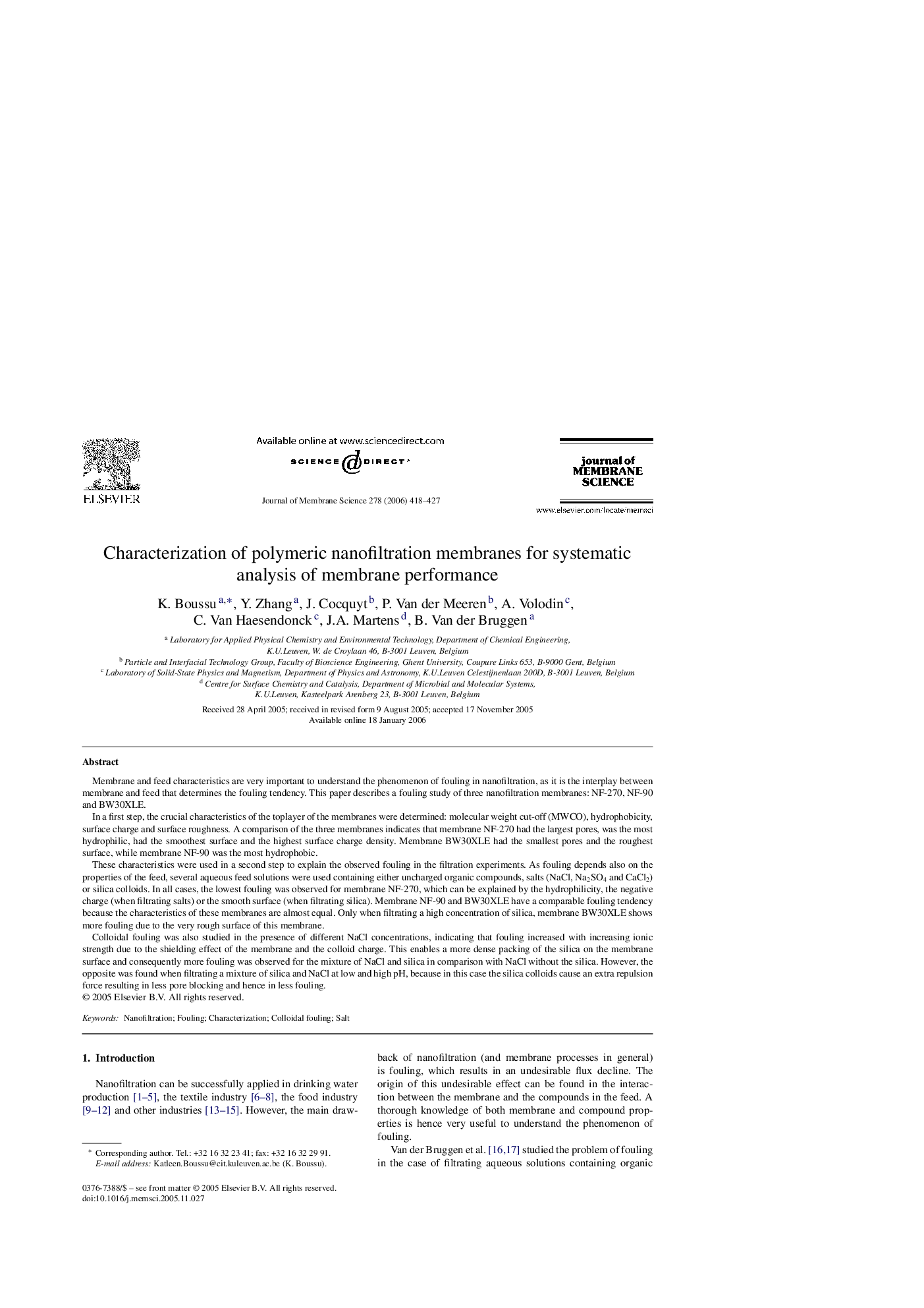| Article ID | Journal | Published Year | Pages | File Type |
|---|---|---|---|---|
| 639567 | Journal of Membrane Science | 2006 | 10 Pages |
Membrane and feed characteristics are very important to understand the phenomenon of fouling in nanofiltration, as it is the interplay between membrane and feed that determines the fouling tendency. This paper describes a fouling study of three nanofiltration membranes: NF-270, NF-90 and BW30XLE.In a first step, the crucial characteristics of the toplayer of the membranes were determined: molecular weight cut-off (MWCO), hydrophobicity, surface charge and surface roughness. A comparison of the three membranes indicates that membrane NF-270 had the largest pores, was the most hydrophilic, had the smoothest surface and the highest surface charge density. Membrane BW30XLE had the smallest pores and the roughest surface, while membrane NF-90 was the most hydrophobic.These characteristics were used in a second step to explain the observed fouling in the filtration experiments. As fouling depends also on the properties of the feed, several aqueous feed solutions were used containing either uncharged organic compounds, salts (NaCl, Na2SO4 and CaCl2) or silica colloids. In all cases, the lowest fouling was observed for membrane NF-270, which can be explained by the hydrophilicity, the negative charge (when filtrating salts) or the smooth surface (when filtrating silica). Membrane NF-90 and BW30XLE have a comparable fouling tendency because the characteristics of these membranes are almost equal. Only when filtrating a high concentration of silica, membrane BW30XLE shows more fouling due to the very rough surface of this membrane.Colloidal fouling was also studied in the presence of different NaCl concentrations, indicating that fouling increased with increasing ionic strength due to the shielding effect of the membrane and the colloid charge. This enables a more dense packing of the silica on the membrane surface and consequently more fouling was observed for the mixture of NaCl and silica in comparison with NaCl without the silica. However, the opposite was found when filtrating a mixture of silica and NaCl at low and high pH, because in this case the silica colloids cause an extra repulsion force resulting in less pore blocking and hence in less fouling.
